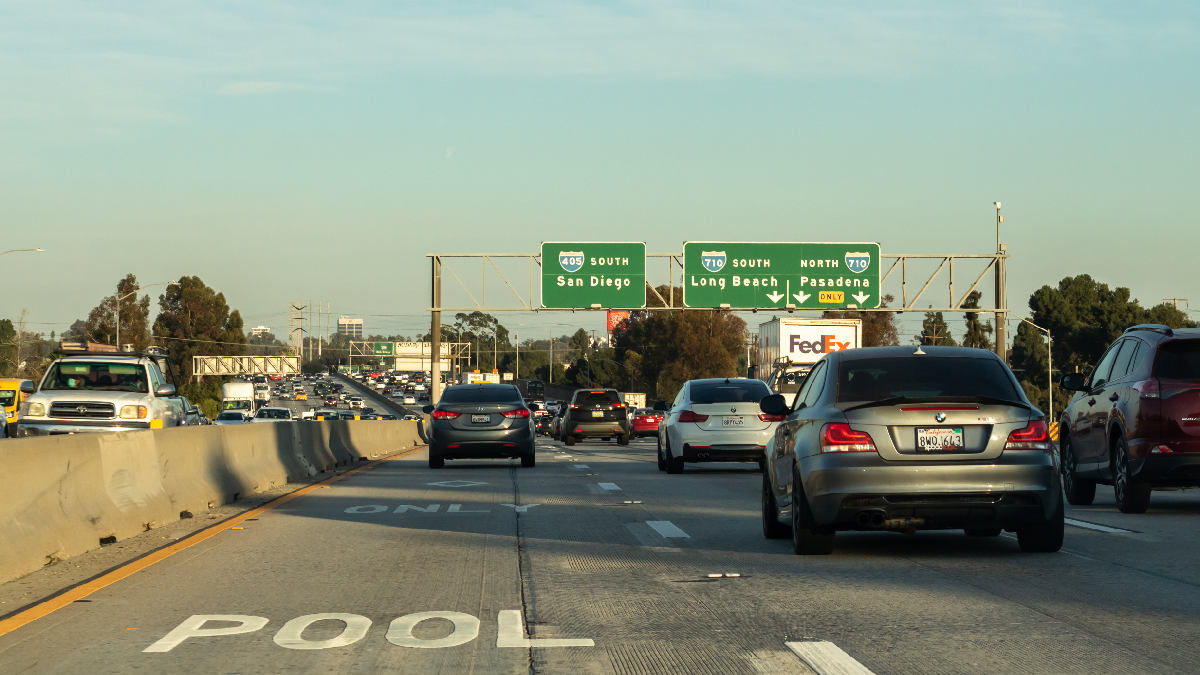Merging car accidents make up a significant percentage of yearly car accidents. A merging collision can occur whenever multiple lanes or vehicles are traveling through an on-ramp. If you have been injured in a merging collision that wasn’t your fault, you may be entitled to compensation through an insurance claim or personal injury lawsuit.
The Los Angeles car accident attorneys at Saeedian Law Group have helped car accident victims recover the total and fair amount of compensation they deserve. We use our legal experience and in-depth knowledge to provide clients with excellent legal counsel. Our law firm has a proven track record of obtaining millions of compensation for car accident victims. Contact Saeedian Law Group to schedule a complimentary, no-obligation consultation with one of our experienced attorneys.
Common Causes of Merging Collisions
Most merging accidents happen on interstates and major highways. They can end up involving multiple vehicles, causing serious damage and injuries. Most merging collisions occur because one or more drivers are distracted and not paying attention to the road. On heavily traveled roads, such as Los Angeles freeways, a driver only takes a few seconds to cause an accident while trying to merge. Some of the specific causes for these types of accidents include the following:
- Distracted driving
- Merger hesitation
- Not signaling when merging
- Crossing multiple lanes
- Speeding or road rage
- Cutting other drivers off
- Driving while intoxicated by drugs or alcohol
- Slow movement when entering the highway
- Switching back and forth between lanes
- Tailgating
- Making an illegal turn
- Making an unlawful U-turn
- Entering the intersection from a stopped position into the path of a moving vehicle
- Making a wide turn that strikes a stopped vehicle at an intersection
- Entering a roadway from a driveway or private road
Proving Fault in a Merging Collision
To recover compensation for your injuries, you will need to prove that the at-fault driver’s negligence or recklessness caused your injuries. Determining fault depends on which driver had the right of way. Generally, the driver who is not merging and is already on the roadway has the right of way. The driver merging onto the road should wait to enter the lane until it’s safe to enter the lane.
However, if the non-emerging driver didn’t adjust his or her speed to account for the oncoming vehicle, that driver could be partially at fault. Similarly, if the non-emerging driver tries to stop the emerging driver from entering the lane, he or she may be partially or fully at fault for the accident.
When proving fault will be challenging, a thorough investigation into the accident is needed. When you work with an attorney, your attorney will be able to find any available surveillance video or other physical evidence that can establish the sequence of events. Eyewitness testimony of the accident is also important. Finally, the type of vehicle damage on one or both vehicles can indicate what happened to cause the accident.
Damages Available in Merging Collision Accidents
It only takes a few seconds for a driver to negligently merge into another driver’s lane and cause a devastating accident. Many merging accidents occur on highways and freeway on-ramps. The vehicle already traveling in the lane may be traveling at high speeds. When the merging vehicle collides with the ongoing vehicle, the collision may cause the driver’s vehicle to spin and swerve into other lanes of traffic.
One driver’s negligence could result in multiple drivers and passengers suffering devastating injuries due to a high-speed collision. If you have been seriously injured, you have the right to pursue compensation from the at-fault driver who caused the accident. Plaintiffs and personal injury cases can pursue the following types of damages:
- Past and future medical expenses
- Lost wages
- Loss of earning capacity
- Property damage
- Pain and suffering
Steps to Take After Being in a Merging Accident
Being involved in any type of accident can be traumatic. Knowing what steps to take can help protect yourself while focusing on your recovery. After the accident, you should call 911 and ask for a police officer to come to the scene. If anyone is injured, including yourself, ask for emergency medical services and go to the hospital for treatment. Ensure you keep all of your medical documentation.
Do not post about the accident on social media. You should discuss any settlement offers with your attorney before accepting them, as initial settlement offers are often too low. After you receive medical treatment, you should meet with an attorney who can help you develop a strategy for your legal claim. Make sure you keep all of your medical documentation and document your pain levels, injuries, missed time at work, and other damages you’ve suffered from your injuries.
How an Attorney Can Help You Succeed in Your Claim
When it comes to recovering compensation after a merging collision, negotiation can play an important role. Negotiating with insurance adjusters who want to limit or deny your claim can be challenging, especially if you’ve been seriously injured. The attorneys at Saeedian Law Group are skilled negotiators and will handle all communication between the insurance company or defendant and you so you can focus your energies on recovering.
We can also help you investigate your case and gather evidence to build a strong personal injury claim. We have a network of financial and medical experts who can help us evaluate your claim’s full and fair value.
Discuss Your Case with a Los Angeles Car Accident Attorney
If you have been injured in a merging accident in Los Angeles, you only have a limited amount of time to file a claim for compensation. The sooner you reach out to an attorney, the sooner an attorney can begin protecting your rights and building your legal claim. Contact Saeedian Law Group today to schedule a free case evaluation and learn more about your legal options.
